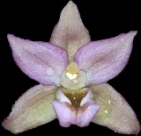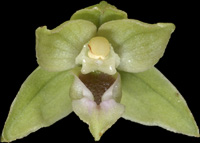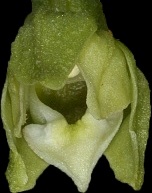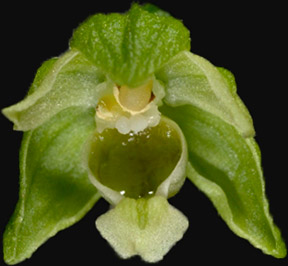ΓΕΝΟΣ EPIPACTIS (ZINN)
GENUS EPIPACTIS (ZINN)
Η οικογένεια των Oρχιδιδών (Orchidaceae) αποτελείται από πολλά γένη. Στην Ελλάδα εμφανίζονται 18 γένη αυτοφυών ορχιδέων. Μεταξύ αυτών τα πιο ενδιαφέροντα είναι τα γένη Epipactis, Dactylorhiza και Ophrys. Τα είδη που ανήκουν στα γένη αυτά, είναι πολλά στον αριθμό και φαίνεται ότι βρίσκονται σε ενεργό φάση εξέλιξης και διαμόρφωσης των γονο- και φαινοτυπικών τους χαρακτηριστικών, με αποτέλεσμα την ιδιαίτερα μεγάλη ποικιλομορφία τους και τις ταξινομικές δυσκολίες που χαρακτηρίζουν την περιγραφή και αναγνώρισή τους.
Ακόμα και ο λιγότερο εξοικειωμένος με τις αυτοφυείς ορχιδέες ξέρει ότι οι καλύτεροι βιότοποι για να τις συναντήσει κανείς είναι οι ηλιόλουστοι και ξερικοί φρυγανότοποι, συνήθως πάνω σε ασβεστολιθικό υπόστρωμα και κυρίως στην νότια Ελλάδα και τα νησιά. Οι περισσότερες ελληνικές ορχιδέες προτιμούν ήπιους χειμώνες και δροσερή άνοιξη καθώς είναι προσαρμοσμένες στο μεσογειακό κλίμα και ανθίζουν συνήθως νωρίς, από το Μάρτιο ως το Μάιο. Υπάρχει όμως ένα γένος, το γένος Epipactis, του οποίου τα είδη προτιμούν τα σκιερά και υγρά δάση και ανθίζουν μέσα στο κατακαλόκαιρο, συνήθως το μήνα Ιούλιο. Τα είδη και υποείδη του γένους Epipactis στην Ελλάδα ανερχόταν μέχρι πριν 3-4 χρόνια στα 15. Πρόσφατα, χάρη σε ανακαλύψεις κεντρο- και βορειο-ευρωπαϊκών χλωριδικών στοιχείων εντός των ελληνικών συνόρων, ο αριθμός αυτός ανήλθε στο 22. Κατανέμονται κυρίως στην κεντρική και βόρεια Ελλάδα, σε σκιερά δάση οξιάς και σπανιότερα πεύκων και βελανιδιάς. Στην Πελοπόννησο υπάρχουν τεκμηριωμένα 3 είδη (E. halacsyi, E. helleborine, και E. microphylla),ενώ αδημοσίευτα στοιχεία υπάρχουν για τις E. greuteri, subclausa και exilis. Στα νησιά, συναντά κανείς Epipactis μόνο στα μεγάλα, που μπορούν να συντηρήσουν κατάλληλα ενδιαιτήματα, συγκεκριμένα στην Εύβοια, Κρήτη, Λέσβο, Χίο, Σάμο και Κω. Όπως είναι αναμενόμενο, τα περισσότερα είδη του γένους απαντώνται στα υγρά ημιορεινά και ορεινά δάση της βόρειας Ελλάδας, σε υψόμετρα πάνω από 800 μέτρα, όπου τα ενδιαιτήματα είναι κατάλληλα.
Το γένος είναι Ευρασιατικό, μονοφυλετικό με μόνο ένα είδος στην Αμερική και ένα στην Αφρική. Μετά την εποχή των τελευταίων παγετώνων, δηλαδή κατά τα τελευταία 10.000 χρόνια, εξαπλώθηκε στη μέση και βόρεια Ευρώπη και προσαρμόστηκε στα σκιερά πλατύφυλλα δάση που επικράτησαν στην ήπειρο. Η πρόσφατη εξάπλωσή του εξηγεί την μορφολογική πολυπλοκότητα των ειδών πολλά εκ των οποίων, βρισκόμενα σε ενεργό εξελικτική διεργασία, παρουσιάζουν ποικιλίες και διαφορετικές μορφές στα άνθη και βλαστικά φύλλα, με αποτέλεσμα τις δυσκολίες στην ταξινόμηση. Επιπρόσθετα, με δεδομένο ότι οι περισσότεροι ερευνητές του περασμένου αιώνα είχαν το ενδιαφέρον τους στραμμένο στις παραμεσογειακές περιοχές, το γένος Epipactis μόνο τα τελευταία χρόνια μελετήθηκε συστηματικά. Ο αριθμός των νεοπεριγραφέντων ειδών αυξήθηκε κατακόρυφα και έτσι σήμερα τα Ευρωπαϊκά taxa ανέρχονται περίπου στα 60.
Στην Ελλάδα, η μελέτη, ονοματολογία και ταξινόμηση των αυτοφυών ορχιδέων ήταν για πολλά χρόνια προνόμιο ξένων ερευνητών (Nelson 1976, Gölz & Reinchard 1981, Künkele & Paysan 1981, Willing & Willing 1987, Willing & Willing 1991, Delforge 1995, Biel et al. 1998, Kretzschmar et al. 2002). Ελάχιστοι ήταν οι Έλληνες επιστήμονες που σοβαρά ασχολούνταν με το θέμα κατά τις προηγούμενες τρεις 10ετίες (Καλοπίσης 1988) και οι περισσότεροι παρουσίαζαν συνήθως μόνο πληροφορίες εξάπλωσης των ορχεοειδών, προερχόμενες από γενικότερες χλωριδικές και φυτοκοινωνιολογικές μελέτες (Ζαγγανιάρης, 1940, Βολιώτης 1976, Αθανασιάδης & Ελευθεριάδου 1989, Ελευθεριάδου 1992, Καραγιαννακίδου 1995, Αραμπατζής 2001, Τσιριπίδης 2001, Θεοδωρόπουλος & Ελευθεριάδου 2003). Ελάχιστοι εξ αυτών είχαν στραμμένη την προσοχή τους στα βουνά της κεντρικής και παραμεθόριας Ελλάδας με αποτέλεσμα το γένος Epipactis να είναι για πολλά χρόνια πλημμελώς μελετημένο. Τα βουνά της βόρειας Ελλάδας μελετήθηκαν συστηματικά τα τελευταία 4 χρόνια, στα πλαίσια δύο εγχειρημάτων: της εκπόνησης ενός διδακτορικού στον τομέα Βοτανικής του Αριστοτέλειου Πανεπιστημίου Θεσσαλονίκης, και την συστηματική καταγραφή και χαρτογράφηση όλων των ορχεοειδών της Ελλάδας από τους συγγραφείς, εγχείρημα που ξεκίνησε πριν χρόνια και συνεχίζει μέχρι και σήμερα. Η συστηματική αυτή μελέτη οδήγησε στην ανακάλυψη 6 κεντρο-ευρωπαϊκών taxa και ενός ανατολικο-μεσογειακού, εντός ελληνικών συνόρων, αυξάνοντας σημαντικά τον αριθμό των ελληνικών ειδών Epipactis. Στον Όρβηλο ανακαλύφθηκε η E. atrorubens ssp. spiridonovii, θεωρούμενη μέχρι πρότινος ενδημική της Βουλγαρίας (Tsiftsis 2007) και η E. distans, στη Ροδόπη και στα Όρη Λεκάνης η E. pontica (Tsiftsis 2007), στη Λέσβο η ανατολίτικη E. persica (Tsiftsis 2010), σε αρκετά βουνά της Μακεδονίας η E. helleborine ssp. moratoria (Antonopoulos, Tsiftsis 2011), στο Φαλακρό και Γράμμο η E. leptochila ssp. neglecta και στον Γράμμο η E. purpurata.
Σε συνεργασία με τον Σπύρο Τσιφτσή αποφασίστηκε να παρουσιαστούν ξεχωριστά τα Ελληνικά είδη του γένους αυτού, με πιο αναλυτικό τρόπο σε σχέση με την ως τώρα παρουσίαση των ειδών στην παρούσα ιστοσελίδα. Όσον αφορά τα υπόλοιπα Ευρωπαϊκά είδη του γένους Epipactis, υπάρχει ο ιστοχώρος αναφοράς για τις Ευρωπαϊκές επιπακτίδες με πληθώρα πληροφοριών και φωτογραφικού υλικού, στην σύνδεση http://www.aho-bayern.de/epipactis/fs_epipactis_1.html
The family of Orchidaceae consists of several genera. In Greece, there are 18 genera with numerous species and subspecies. Among these the most interesting are the Epipactis, Dactylorhiza and Ophrys genera. The species belonging to the above genera they are many in number and seem to be in active phase of evolution and formation of genetic and phenotypic characteristics, resulting in very high diversity and taxonomic difficulties concerning their description and identification.
Even the less familiar orchid lovers know that the best habitats for orchids are the sunny and dry brushwood habitats, usually on limestone, mainly in southern Greece and the islands. Most Greek orchids prefer mild winters and cool spring and are adapted to the Mediterranean climate and usually bloom early, from March to May. There is but one genus, genus Epipactis, which species prefer shade and moist forests and flower in the middle of summer, usually in July. For a long time there were reports about 15 species and subspecies of Epipactis in Greece. Recently, thanks to discoveries of mid and north-European floristic elements within Greek borders, this figure rose to 22. Distributed mainly in central and northern Greece, in shady forests of beech and rarest pine and oak. In the Peloponnese 3 species are documented (E. halacsyi, E. helleborine, and E. microphylla), but there are also unpublished data available for E. greuteri, subclausa and exilis. Only in the large islands, which can sustain suitable habitats, can someone meet Epipactis, particularly in Euboea, Crete, Lesvos, Chios, Samos and Kos. As expected, most species of the genus found in the dense, humid and mountainous forests of northern Greece, at altitudes above 800 meters, where the conditions are suitable.
The genus is Eurasian, monophyletic with only one species in America and one in Africa. After the last glacial period, during the last 10,000 years, the genus spread in the middle and northern Europe and adapted to shady broadleaf forests that dominated the continent. The recent spread explains the morphological complexity of species many of which are in an active evolutionary process, presenting varieties and different forms of flowers or the stem and leaves, leading to difficulties in classification. Additionally, given that most researchers of the last century had turned their interest to Mediterranean areas, Epipactis taxa, only in recent years have been studied systematically. The number of newly described species increased and today the Epipactis genus in Europe hold about 60 different taxa.
In Greece, the study, nomenclature and classification of native orchids for many years was a privilege of foreign researchers (Nelson 1976, Gölz & Reinchard 1981, Künkele & Paysan 1981, Willing & Willing 1987, Willing & Willing 1991, Delforge 1995, Biel et al. 1998, Kretzschmar et al. 2002). Few were the Greek scientists seriously involved with this matter in the last three decades (Kalopissi 1988) and most were usually reporting only few information of the orchid species, derived from general floristic and phytosociological studies (Zaganiaris, 1940, Volos 1976, Athanasiadis & Eleftheriadou 1989 , Eleftheriadou 1992, Karagiannakidou 1995, Arabatzis 2001, Tsiripidis 2001, Theodoropoulos & Eleftheriadou 2003). Few of them had turned their attention to the mountains of central Greece and the border so the genus Epipactis was for many years poorly studied. The mountains of northern Greece have been studied systematically in the last 4 years, under two scopes: the preparation of a PhD in Botany, Aristotle University of Thessaloniki, and the systematic recording and mapping of all the orchids of Greece from the authors, a project that began years ago and continues until today. This systematic study led to the discovery of 6 mid-European taxa and one eastern Mediterranean, within Greek borders, significantly increasing the number of Greek species of Epipactis. In Orvilos mountain E. atrorubens ssp.spiridonovii, previously considered endemic in Bulgaria (Tsiftsis 2007) and E. distans (Tsiftsis, Antonopoulos, Kreutz 2010, unpublished data), were discovered. E. pontica in Rhodope and bordering Lekani mountains (Tsiftsis 2007), the oriental E. persica in Lesbos (Tsiftsis 2010), E. helleborine ssp. moratoria in several mountains of Macedonia, (Antonopoulos, Tsiftsis 2011), E. leptochila ssp. neglecta in Falakron and Grammos (unpublished data) and E.purpurata on Grammos (unpublished data).
It was decided, in cooperation with Spyros Tsiftsis, to present separately the Greek taxa of Epipactis genus in a more detailed way. In the following table you will find links to the new, detailed pages, as well to the older ones. The table will be updated whenever a new taxon is presented. For the Epipactis taxa of the rest Europe, there is always the referential website, with numerous photos and information, at http://www.aho-bayern.de/epipactis/fs_epipactis_1.html
|
Taxa του γένους Epipactis στην Ελλάδα Epipactis taxa in Greece |
|
|
old page |
|
|
old page |
|
|
old page |
|
|
old page |
|
|
old page |
|
|
old page |
|
|
heraclea |
|
|
old page |
|
|
degenii NEW PAGE!! |
|
|
greuteri NEW PAGE!! |
|
|
old page |
|
|
persica subsp. gracilis NEW PAGE! |
|
|
old page |
|
|
pontica NEW PAGE! |
|
|
old page |
|
|
densifolia |
|
|
condensata |
|
|
turcica |
|
|
old page |
|
|
purpurata NEW PAGE! |
|
|
old page |
|
Orchids list - Κατάλογος ορχιδέων






